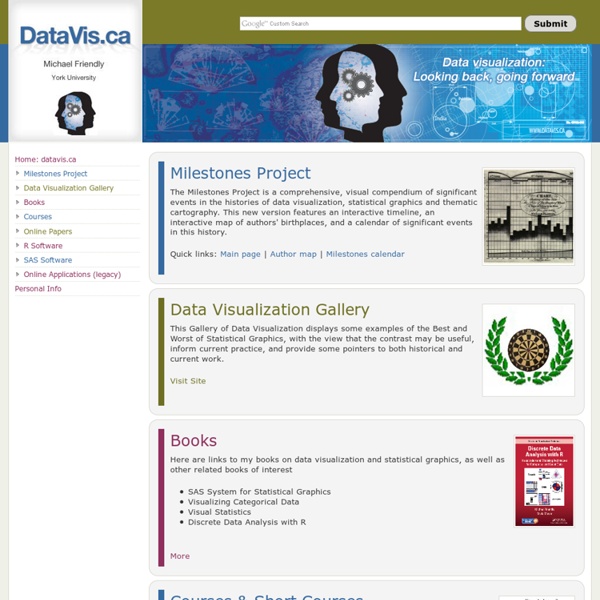



Visual Thinking Home » All CFT Teaching Guides » Visual Thinking by CFT graduate program coordinator Maria Ebner & assistant director Derek Bruff Introduction Our brains are wired to rapidly make sense of and remember visual input. Below you’ll find resources for integrating visual thinking in your teaching. On March 17, 2010, the CFT hosted a workshop on this topic. For more notes from the workshop, as well as ideas participants generated during the workshop, see the bottom of this page. Images as Metaphors Presentation Zen: Garr Reynolds, author of Presentation Zen, maintains a blog in which he writes about effective presenting. Flickr: A great source for free, high-quality images is Flickr, the photo-sharing site. Images as Stories Digital Storytelling: See the University of Houston’s Educational Uses of Digital Storytelling site for an introduction to digital storytelling, examples of digital stories, and resources for getting started. Schematic Diagrams Data Visualizations More Resources
The Three Elements of Successful Data Visualizations - Jim Stikeleather by Jim Stikeleather | 8:00 AM April 19, 2013 Now that we’ve discussed when data visualization works — and when it doesn’t, let’s delve into what makes a successful data visualization. Although there are a number of criteria, including ease of comprehension and aesthetics, I’d like to explore the three that designers most often overlook. 1. It understands the audience. Before you throw up (pun intended) data in your visualization, start with the goal, which is to convey great quantities of information in a format that is easily assimilated by the consumers of this information — decision-makers. Who is the audience, and how will it read and interpret the information? 2. Lines and bars are simple, schematic geometric figures that are an integral component of many kinds of visualizations: lines connect, suggesting a relationship. There is one other element to the framework: Before everything else, make sure your data is clean and you understand its nuances. 3.
Story Map — Design story Rise from pixel-pusher to a product visionary with a new type of design document called a “story map.” What is a story map? A story map is a new type of design document that shows the big idea of your product experience at a glance. A good story map is your golden ticket to unify your team, secure executive support, and help you find a way to ship. Halfway between a storyboard and a treasure map, it bundles the value and functional flow of your product with the delight people might feel at each step in your product. A good story map conveys whatyour project can do at a glance. A story map depicts how your product works and why it matters—but crucially—it does not explicitly spell out the final design, UI or in-the-weeds UX logic. A good story map serves asa decision-making-machine. A story map is not a mock, it is a guide to make sure everyone is solving the same problem, building the same product and pointing at the same piece of paper while making decisions. How to make one The Journey
Explore Featured Maps | Metamaps Enter Topic (radial) View: Click on a Topic result from Search, or click the synapse icon inside open Topic Card on map Recenter Topics around chosen Topic: Alt + click on the topic OR Alt + E Reveal the siblings for a Topic: Right-click and choose 'Reveal siblings' OR Alt + R Center topic and reveal siblings: Alt + T Filter out visible Topics: Open Filter menu *** and toggle off/on Double-click on canvas: Bring up the metacode spinner Scroll: change metacode spinner selection Tab: rotate spinner counter-clockwise Shift + tab: rotate spinner clockwise Esc: Hides auto-suggestion results Enter: create a new topic Gear Icon: open up metacode settings Open Topic card: Double-click on topic icon Move Topic card: Click and drag on topic card metacode Change metacode: Mouse over metacode icon, then click on solid colored bar for metacode menu Edit Topic title, description, link: Click on text in respective area (click small "X" to reset link) Save Topic title, description, link: Hit enter, or click away
World Bank Dataviz VisualEyes Visualization Universe - The Most Searched for Visualization Types, Tools, and Books Raphaël—JavaScript Library Neatline